New Breeding Innovations to Make a Food-Secure World
| |

The world faces major challenges to feed itself. The Food and Agriculture Organization of the United Nations (FAO) reported in 2017 that the world needs to produce at least 50% more food to feed the human population by 2050. This comes at a time when food production is affected by climate change-related severe weather events, changes in rainfall, loss of arable land and freshwater resources, and a declining workforce in agriculture in many developing countries. Rapid urbanization has also prompted the demand for sustainably produced food with fewer chemicals, less land, less water, and less labor.
With the introduction of new breeding innovations (NBIs), the world gets hope in securing enough food to feed its growing population. How can NBIs help farmers, especially smallholder farmers, contribute to improving food security? How can NBIs help produce more food given all the climate change-related challenges? These questions were addressed in the chapter Potential Contributions of New Breeding Innovations in Food Security authored by Dr. Paul S. Teng, Chair of the ISAAA Board of Directors, in ISAAA Brief 56 Breaking Barriers with Breeding: A Primer on New Breeding Innovations for Food Security.
What is food security?
Food security is defined by the FAO as a condition “when all people, at all times, have physical, social and economic access to sufficient, safe and nutritious food to meet their dietary needs and food preferences for an active and healthy life.” According to Dr. Teng, food security is a multidimensional phenomenon, and he explained the four dimensions of food security before describing how NBIs can result in crop traits to assure each of the dimensions. The four dimensions of food security are food availability, physical and economic access to food, and food utilization.
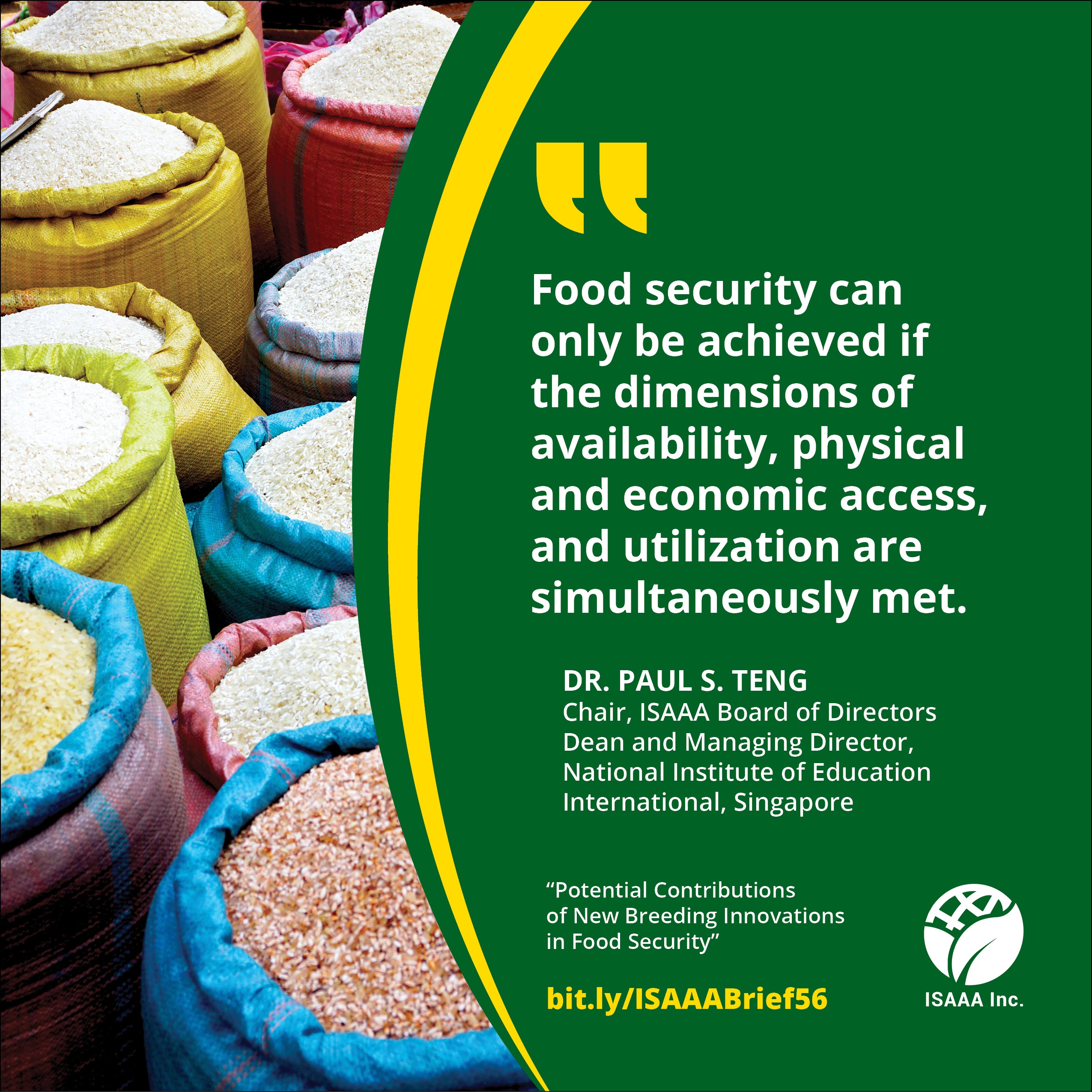
Food security dimensions
The first dimension of food security is food availability. This dimension is focused on raising agricultural productivity, particularly for countries with a large agricultural sector. Food availability is also one that is most affected by farming and farmer expertise through crop productivity. Seeds developed through modern breeding techniques give farmers higher yield potential. Food losses and wastage further add pressure on food availability. The FAO estimates that about one-third of food produced for human consumption, equivalent to 1.3 billion tons annually, is unused or discarded globally. NBIs have the potential to develop food products with delayed ripening and decay, and therefore reduce the amount of fresh produce that is thrown away.
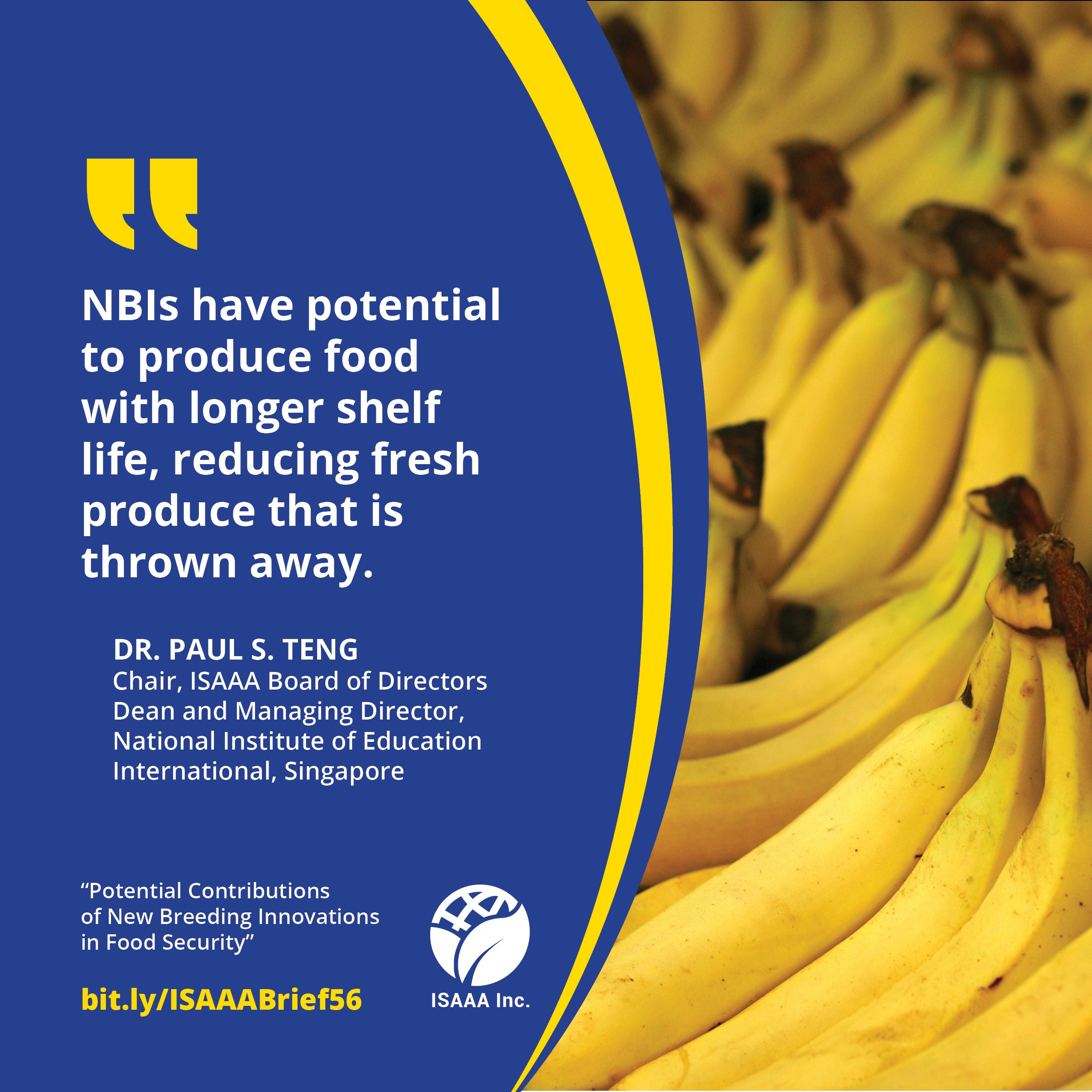
The second and third dimensions of food security are access to food, both physical and economic. In countries where most food is imported, Supply chains must be reliable, consumers should be able to physically reach food supplies through a marketplace, and the food must be affordable. Economic access weighs more heavily in urban areas where poorer consumers spend a significant part of their household budget on food. Factors affecting economic access include employment and income security, the tariff on food commodities, and market prices. One way to improve economic access is to ensure a stable food supply produced using crop varieties developed through modern breeding techniques.
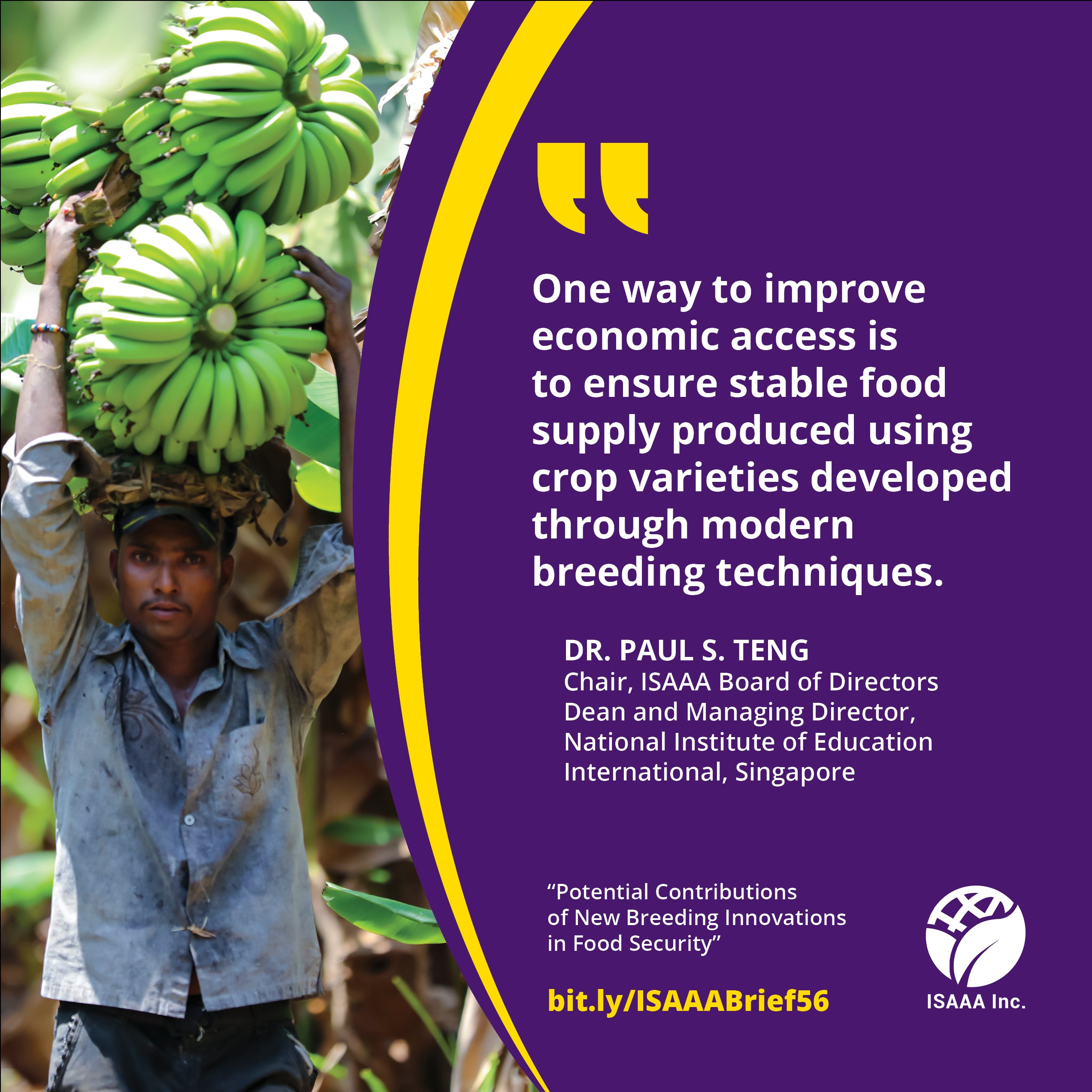
The fourth dimension of food security is food utilization which is reflected in the nutritional status of an individual. Utilization is the general diversity and nutritional value of food, as well as food safety and food sanitation. NBIs can help answer the current demand for foods with unique nutritional or health attributes based on the genetic characteristics of their ingredients.
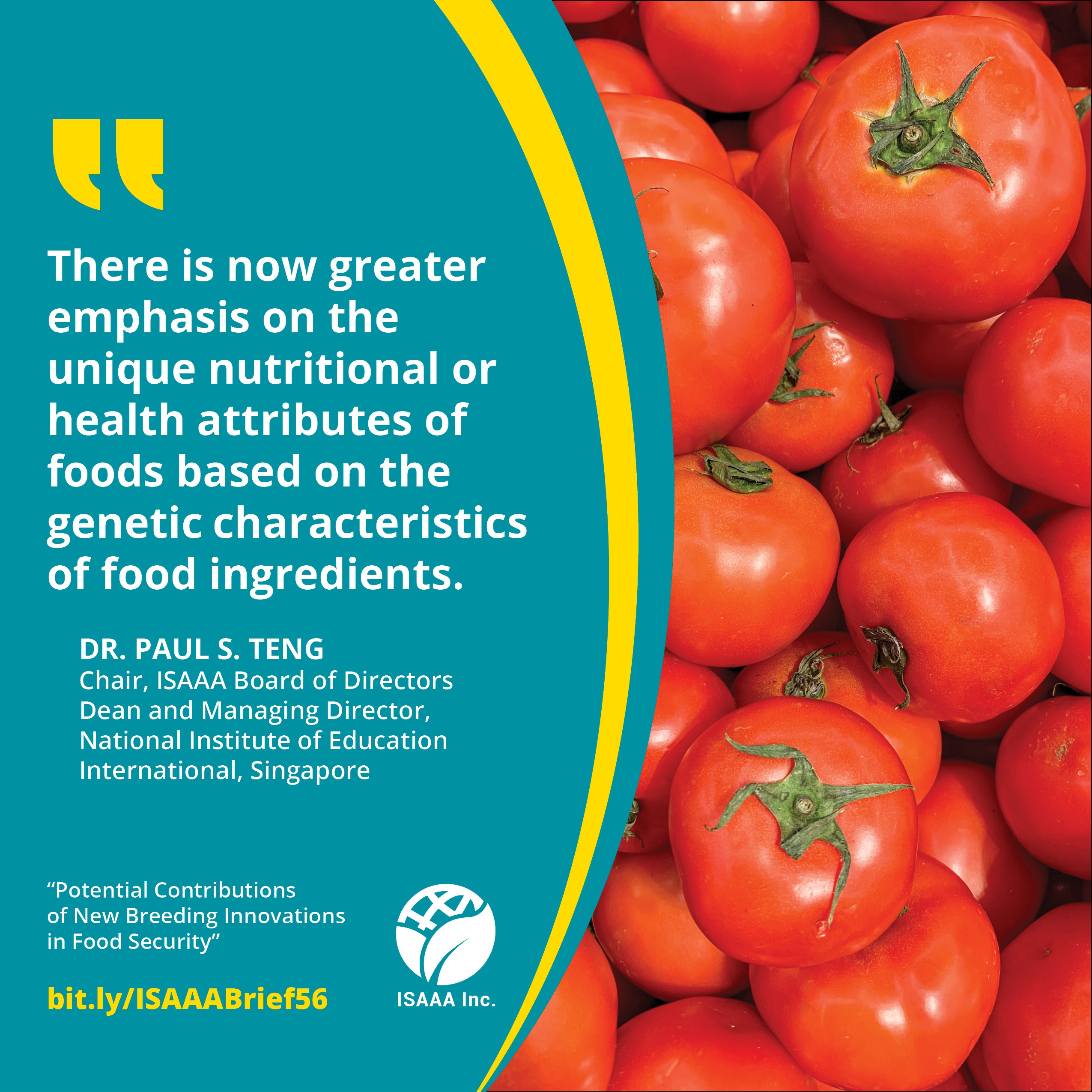
Disruptions to food security dimensions
According to Dr. Teng, two major groups disrupt food security — biophysical, and socio-economic. Each dimension may potentially be affected by a set of factors, and some factors may disrupt more than one dimension. The main ones are severe weather events, pest and disease outbreaks, natural calamities, and anthropogenic catastrophes. Scientists help farmers deal with these main disruptors by using plant breeding techniques to produce crop varieties with specific traits that can resist or tolerate the disruption.
Helping farmers contribute to food security through NBIs
NBIs can contribute to improving food security by helping farmers get the best seeds derived from the latest science and technology, preferably with one or more traits. Dr. Teng identified the traits that crops should possess to give farmers the best seeds.
- Crops with higher potential yield. NBIs offer opportunities to use existing crop genomes to change their potential yields. Higher farmer’s yields would have a profound effect on raising crop production overall and contribute to food security.
- Crops that tolerate environmental stresses. NBIs such as gene editing help develop crops that tolerate flooding and drought. There is much hope that gene editing alone or in combination with other techniques may quicken the development of genotypes with strong tolerance to both.
- Crops with resistance to insect pests and diseases. NBIs allow scientists to build on earlier successes in pest management using biotechnology and develop crops with resistance to serious diseases such as Panama wilt or rice blast.
- Crops with modified nutritive value of flavor. Gene editing is now being used to change the nutritive value and flavor of food and beverages, such as coffee beans with reduced caffeine content.
- Crops with delayed decay or senescence. NBIs can help reduce food waste as gene editing will enable the development of crops with delayed ripening fruits and leafy vegetables with delayed decay.
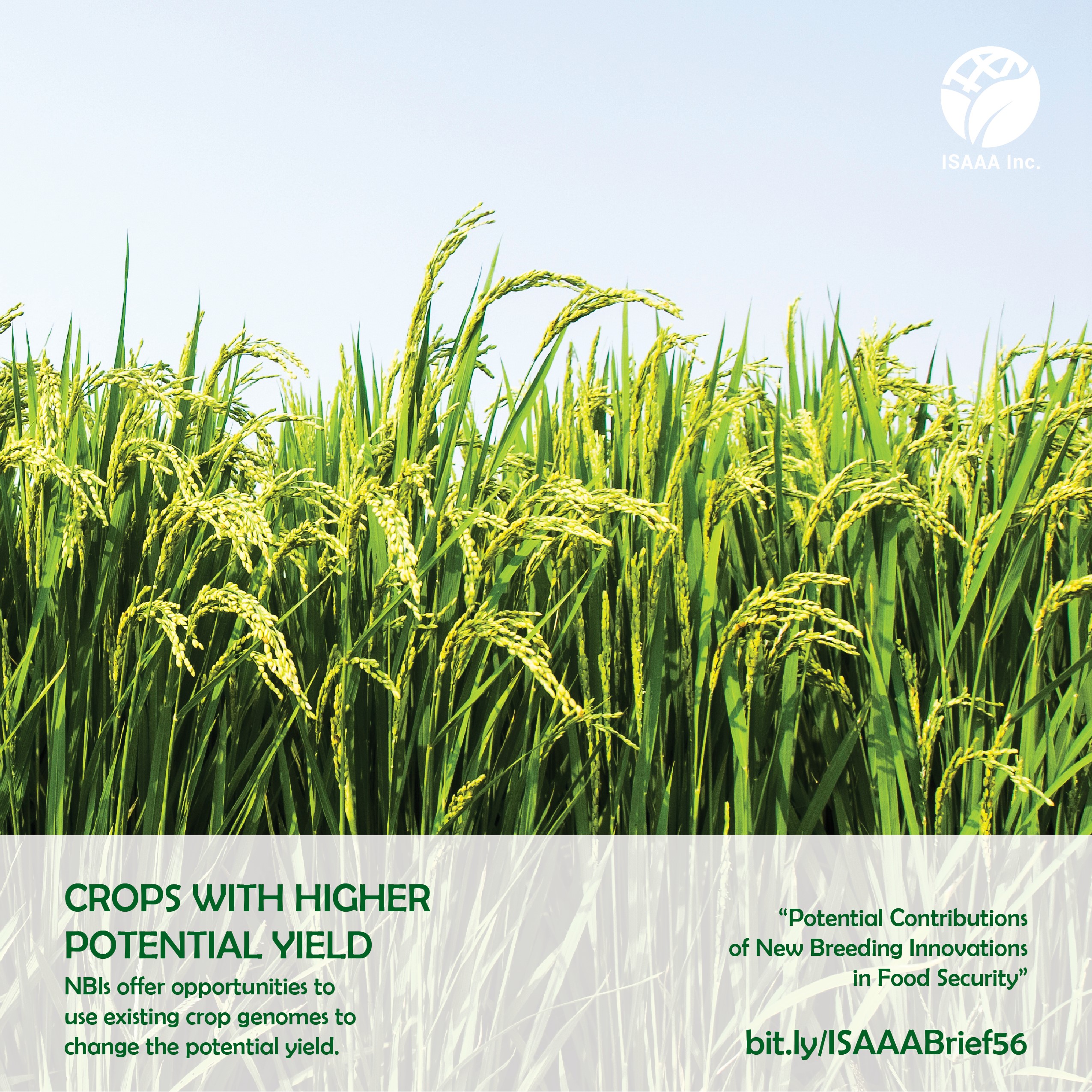
Potential benefits of food security from NBIs
Dr. Teng pointed out that early indications from several countries (U.S.A., Australia, Japan, and others) show that the crop varieties and seeds produced using NBIs do not need to undergo complicated regulatory approval processes, as long as no transgenes are incorporated. He said that this would mean that yield gaps faced in many crops and losses caused by abiotic and biotic factors could be drastically reduced by the new NBI varieties, and all in a shorter time frame, a critical factor in the global efforts to ensure that food security is still possible by 2050. He concluded that, ultimately, NBIs have the potential to positively affect all four dimensions of food security.
For more details on how NBIs can help make a food-secure world, download and read ISAAA Brief 56.
Related articles:
- How CRISPR Helps Mitigate the Effects of Climate Change
- Gene Editing Leads to High Yield and Enhanced Aroma in Rice
- VIB Conducts Three Field Trials of Genome-Edited Maize
- CRISPR-Cas9 Used in Mutagenesis of Soybean Seed Storage Protein Genes
- Gene-edited High Oleic Soybean Oil Now Available in the US
- Study Confirms Effectiveness of Transgenic Coffee Against CBB
- Non-Browning GreenVenus™ Romaine Lettuce Advances to Commercial Trials in the US
- Conscious™ Foods Soon to Release Gene-Edited Leafy Greens
| Newer Post | Archive | Older Post |
Science Speaks is ISAAA Inc.'s official blog. Weekly blog articles, authored by ISAAA writers, partners, and invited contributors, aim to help share, disseminate, and promote scientific knowledge and its vital role in achieving global agricultural sustainability and development. Your support to Science Speaks will help us achieve this goal. You can help us by donating as little as $10.

